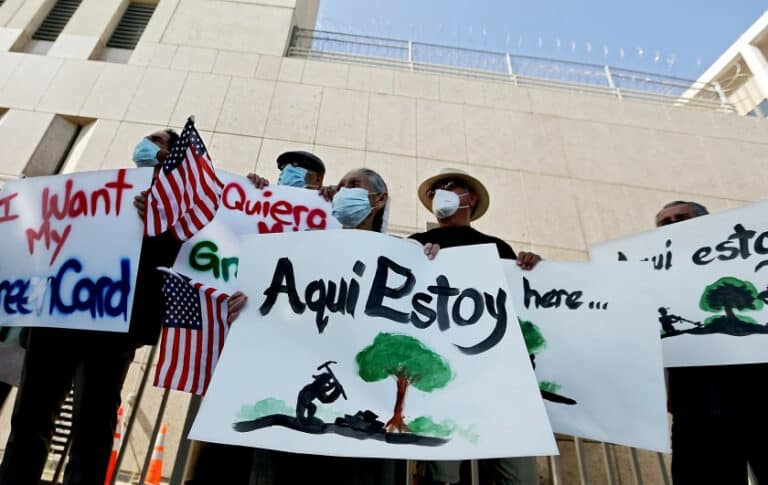
Alexandra Butler is a student at Harvard Law School.
Underscored by the Department of Labor’s (DOL) weekly unemployment claims report, the uncertainty stemming from the pandemic continues to put pressure on and upend the labor market. Last week, 898,000 people sought unemployment assistance for the first time, a 53,000 increase from last week’s total. Many economists note that this number could be the new baseline, pointing to the recent uptick in positive COVID-19 cases as an indication that more jobs are at risk. In addition, many have noted that federal aid has a role to play in granting relief. Yet, Congress’s inability to reach an agreement on the terms of a new package, as well as the impending end to a federally-funded benefits extension could have serious consequences for workers around the country.
Established by the Michigan Occupational Safety and Health Administration (MIOSHA), a new set of pandemic-related emergency rules will help to protect workers throughout the state. For the next six months, Michigan employers will be required to standardize their workplace environments in order to promote safety. Specifically, the rules require employers to categorize job functions by exposure risk, to adopt multifaceted approaches that respond to these risks and prevent the spread of the virus, and to implement cleaning and other safety protocols. With no federally-mandated requirements to serve as a guidepost, Michigan is the third state to take steps towards improving worker safety during the pandemic.
The National Employment Law Project (NELP) released a fact sheet identifying, criticizing and undermining popular arguments that gig economy businesses make about their relationship with their workers. Highlighting company control, NELP emphasizes the ways in which Uber, Lyft, DoorDash and other businesses limit their workers so as to foreclose any possibility that the individuals working for these companies could “operat[e] as an independent business would.” Such limitations include technology-driven, company monitoring and platform configurations that undermine worker autonomy. On Wednesday, Leigh reported that Uber and Lyft presented oral arguments in California Superior Court to escape the reach of California Assembly Bill 5’s (AB5) worker protections. Released just a couple of days later, this fact sheet only serves to support AB5’s reclassification of groups of independent contractors as employees.
Judge Amy Coney Barrett’s Senate confirmation hearings and an upcoming Supreme Court case have focused national attention on the fate of the Affordable Care Act (ACA). Beyond the immediate health care implications and impacts, dismantling the ACA could have serious consequences for the California labor market, according to the UC Berkeley Labor Center. Overturning this piece of federal legislation would eliminate 269,000 jobs in California in 2022, with 59% of the job loss concentrated in the health care sector. Based on the Center’s study, this change in the labor market would be in addition to any other long-term negative effects from the pandemic.
The United States Chamber of Commerce recently expressed its disagreement with and disapproval of President Trump’s Executive Order that bans anti-racist and anti-sexist training in federal workplaces. In a letter signed by over 150 groups, the Chamber criticized the ban’s application to federal contractors, while also emphasizing that “the E.O. will create confusion and uncertainty, lead to non-meritorious investigations, and hinder the ability of employers to implement critical programs to promote diversity and combat discrimination in the workplace.” Specifically, the letter highlights that the E.O’s ambiguity will have and has had a “chilling effect” on federal contractors, causing them to halt diversity and inclusion programs in order to comply with the Order’s mandate.
The Economic Policy Institute (EPI) conducted an analysis to determine the public cost of increasing farmworker wages. Based on the amount of money that the average household spends on fruits and vegetables, EPI concluded that for only an average of $25/year, consumers can increase farmworker wages by 40%. The resulting wage increases still place most workers below the poverty line, but EPI notes that an additional consumer cost of $40/year would increase worker wages to above the poverty line.






Daily News & Commentary
Start your day with our roundup of the latest labor developments. See all
July 14
More circuits weigh in on two-step certification; Uber challengers Seattle deactivation ordinance.
July 13
APWU and USPS ratify a new contract, ICE barred from racial profiling in Los Angeles, and the fight continues over the dismantling of NIOSH
July 11
Regional director orders election without Board quorum; 9th Circuit pauses injunction on Executive Order; Driverless car legislation in Massachusetts
July 10
Wisconsin Supreme Court holds UW Health nurses are not covered by Wisconsin’s Labor Peace Act; a district judge denies the request to stay an injunction pending appeal; the NFLPA appeals an arbitration decision.
July 9
the Supreme Court allows Trump to proceed with mass firings; Secretary of Agriculture suggests Medicaid recipients replace deported migrant farmworkers; DHS ends TPS for Nicaragua and Honduras
July 8
In today’s news and commentary, Apple wins at the Fifth Circuit against the NLRB, Florida enacts a noncompete-friendly law, and complications with the No Tax on Tips in the Big Beautiful Bill. Apple won an appeal overturning a National Labor Relations Board (NLRB) decision that the company violated labor law by coercively questioning an employee […]